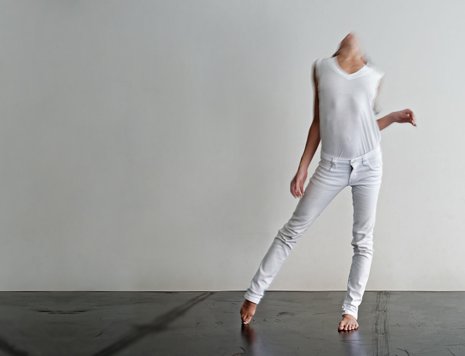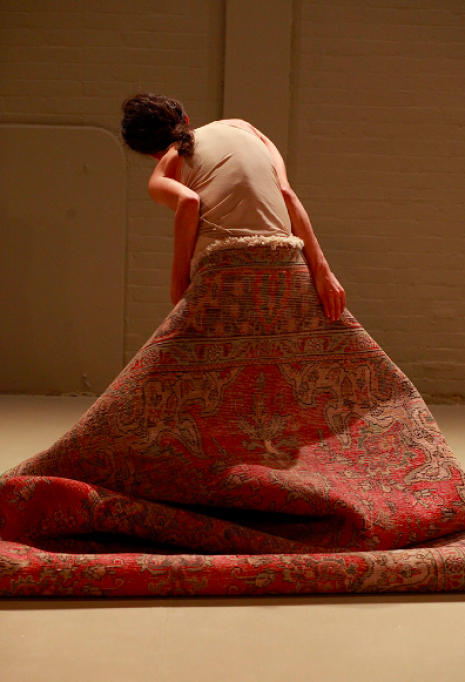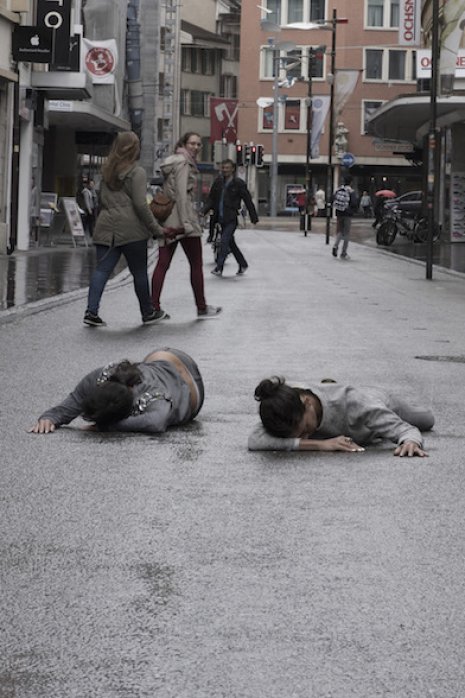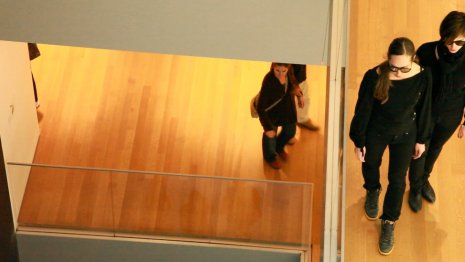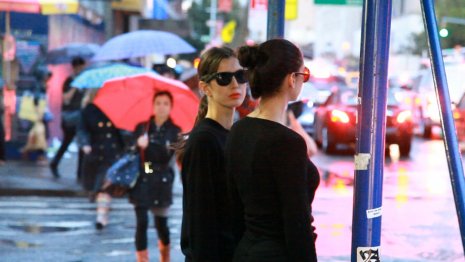Chapter Two
VM:
I’d like to hear more of your thoughts regarding your artistic viewpoint and ideology. How do you understand the notion of “ideology” in relation to your work? What even, IS ideology?
MH:
“Ideology” is a belief system and ethics one has, and as an artist I want to create platforms that share my ideology with my audience— platforms that offer plenty of time, both to the viewer and the performer, to see and to be. Time to notice, to contemplate, to even drift away.
With the decelerated velocity of my work, nuances that are usually dismissed become the center of the work. The viewer can notice physical reactions in the performer that are beyond any pre-conceived choreography, reactions that are un-defined, even uncomfortable, and thus highlight the richness of a human being in a raw and unspectacular way.
I find this state “luxurious,” as it is rare. Everything moves so fast, in front of us and within us. Usually when impacted by strong feelings we stop, and when we do, it is as if time itself stops. I find these moments in life as pivotal sensations.
VM:
To return to this issue: how do you sense – and determine - what you referred to as “indispensable”?
MH:
It is personal and at once relative to the theme of each work. Editing my works down and deleting what I find extra remains very present in my process even during performances, when the work is already public.
I think partly because I’m aiming to create an abstraction with the body, and in a way searching for the undefined, the “nuances,” it takes time to understand what I’m making and for the work to reveal its “face.” Through the process of getting to know the work, my ideas become clearer, and then the editing begins. Hopefully, I end up holding onto the elements that are indispensable.
VM:
You spoke before about taking “time to see and be.” Did this shift come about as a reflection of a specific experience, viewing works by others?
MH:
Yes. There was a time when I would go and see performances, and I would have this desire to scream out loud and say, “Can you stop? Can you please let me look and be with this moment?” Of course, I never screamed out loud; instead I began paring down my material and slowing the rhythm of what I myself was creating.
With this process, every detail that survives becomes a clear, suspended moment. The slow pace, integral to the bodies, brings precision to each action. The labor being put forth allows time to experience the un-spectacular nature of a human being: the muscles, bones, breath, blood. Inevitably, the performers produce movements that are beyond any choreography: shakes, muscular trembles, even tears forming in their eyes. These “small” physical reactions push the limits of choreography as a preconceived structure, bringing to the forefront the aliveness of the form.
The stillness and emptiness that result from zooming into this detailed choreography gave me what I longed for: the time to see and experience each action; to perceive even the smallest nuances.
VM:
You refer to the action of “zooming in” which seems filmic in many ways. But it’s about our attention, right? How does an audience “zoom in?” This goes back to my question about the differences between the theater and the gallery or public space. Is the act of zooming in, related to the audience’s proximity? Is it an internal process on the part of the viewer, and if so, what allows it to happen?
MH:
I cannot control the audience's attention. I can, though, try to direct it. In the case of my work, the act of zooming in isn't necessarily so much related to the audience's proximity (though at times this is the case). The sense of being attuned to the minutest details can also come from the nature of my choreography, its minimalist, distilled nature. I think the strength of my work is partly its “insistence” on my principles, which is central to the work, and it becomes clear to the viewer early on.
VM:
You speak about an audience being touched by your “proposal.” What are you proposing?
MH:
Slowing down.
Slowing down so that we can notice the “unspectacular,” the nuances of human behavior, both physical and mental.
Slowing down to allow a chance for our perceptions to shift.
VM:
How do velocity and the stretching of time, work together in your work?
MH:
It has to do with specificity again. I want to be able to articulate and embody each action as clearly as possible. To achieve this clarity requires slowing down. It requires a bit more time than we take in our usual, everyday actions and mannerisms. It is a construction.
I am not thinking of moving “slowly” — this point is very important. When a dancer thinks of moving “slowly,” somehow they relate it to slow-motion and then they begin looking like zombies, which can be horrific. For me, it’s about specificity, a cerebral precision — being aware of every detail of the body in space and time. Aware of the people around you, aware of your gaze, aware of the viewer, and in general, responsible for what you are producing in each moment, as it will always be representational. An example I often bring up in rehearsal is a person performing surgery and the precision they have to apply. Our actual movements are not slow. For example, if Hristoula (Harakas) has to turn her head she doesn’t take a full minute to do so; rather, her action is done in a matter-of-fact way. At the same time, the motions are not approached abruptly, because that breaks the continuity, and can create rhythmic patterns, and accents, which can elevate importance amongst actions. I’m not interested in that. Also, in each piece, there’s a task that we engage in related to the work’s theme. Sometimes the tasks are very obvious to the viewer — think Robert and Maria, two people sustaining eye contact for the entire duration of the work. With SHOW, the task is not so apparent — two people staying very close to each other without touching, always reaching. These tasks tend to guide my choreography and act as a way to keep us both mentally and physically engaged in the present moment, away from emotional theatrical traps. I think being alert to precision, and fully engaged in the task, is what ends up making my work distinct.
""With the decelerated velocity of my work, nuances that are usually dismissed become the center of the work.""
""There was a time when I would go and see performances, and I would have this desire to scream out loud and say, "Can you stop? Can you please let me look and be with this moment?""" -MH


